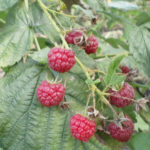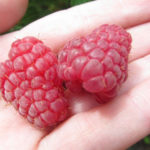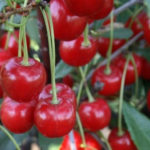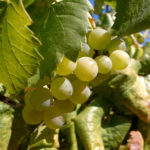Cherry variety Dyber black
Among the many varieties of fruit trees, there are also those whose origin is not known for certain. These include Dyber black cherry, named after its author - gardener A. Dyber. He discovered this variety as a random seedling in the Crimean Gurzuf. It was back in 1862. The inclusion in the State Register of Breeding Achievements of the Russian Federation took place only in 1947. The regions allowed for cultivation are the North Caucasian (Republic of North Ossetia-Alania, Karachay-Cherkessia, Ingushetia, Chechen Republic, Rostov Region and Stavropol Territory) and Nizhnevolzhsky (Republic of Kalmykia). The originator is the North Caucasian Federal Scientific Center for Horticulture, Viticulture, Winemaking. The plant is also known under other names: South Coast, South Coast Red, Bigarro Daibera.
Description
The tree has medium to high vigor, plant height is about 5 - 6 meters. The crown of the variety is thick, broadly round. Cherry shoots are long, upright, covered with brown bark with a greenish tinge. Elongated-oval leaves have a rounded base, the transition to the top is gradual, the top itself is sharply pointed, the edge of the leaf is serrate. The petiole is of normal length and thickness, sometimes with traces of anthocyanin coloration; two dark red glands are located closer to the base of the leaf blade. The diameter of the flowers is about 35 mm, which indicates their large size, the petals are broadly oval, slightly corrugated. The calyx is wide-calcined, 6 × 6 mm in size, stamens from 6 to 13 mm in size, the pistil column is 12 mm, the stigma of the pistil is located below the anthers. The inflorescence of Dybera black consists of 2 - 3 flowers.
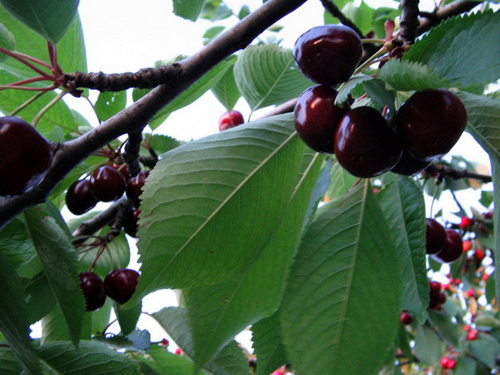
The fruits of the sweet cherry are rounded-wide-heart-shaped, leveled. The funnel is wide and shallow. The apex is slightly obtuse. The line of the abdominal suture is wide, shallow, there is a tubercle across it, along the dorsal side there is a groove. The skin is thick, firm, glossy. During ripeness it becomes dark red, almost black. The dots under the skin are pink, well distinguishable. The pulp is dark red with light streaks. In consistency, it is quite dense, medium-term, as it ripens, it becomes tender. The taste of the variety is very good, sweet, with a slightly sour taste. The juice has an intense red color. The berries are large, weighing 6 or almost 7 grams. The stone is rounded, rather large, its weight is 0.45 grams, which is almost 7% of the total weight of the fruit. It is difficult to separate from the pulp. The peduncle is 4 cm long, attaches to the fruit with medium strength. 100 grams of cherry pulp contains 19.0% of dry matter, 13.6% of sugars, 0.8% of acids, 7.3 mg of ascorbic acid.
Characteristics
- Dyber black begins to bear fruit 5 years after planting, which, in principle, is a good result;
- flowering occurs in medium terms, therefore, the culture belongs to the middle late - the crop ripens in late June - early July;
- the productivity of the variety is quite high - in the Crimea, 16-year-old trees yield up to 90 kg of cherries, the maximum figure is 170 kg. In the Krasnodar Territory, during the period of full fruiting, the yield is 70 - 80 kg from one large size;
- plant immunity is average. In ordinary years, a fungal infection affects the tree to a moderate degree, in unfavorable periods when the weather contributes to the development of fungal diseases, the damage is significant - up to 2 points moniliosis, up to 3 coccomycosis, up to 4 clasterosporiosis;
- winter hardiness is also not high enough. If Dybera black grows in unprotected plantings, it may freeze slightly.Up to 2 points, vegetative buds are damaged in frosts of -30.3 ° C. Flower buds suffer from moderate (72%) to maximum (83%) at -24 ° C;
- due to the dense structure of the pulp, the berries withstand long-term transportation well;
- the way of eating the fruit is dessert. But this does not prevent us from making wonderful compotes, jams, and preserves from sweet berries.
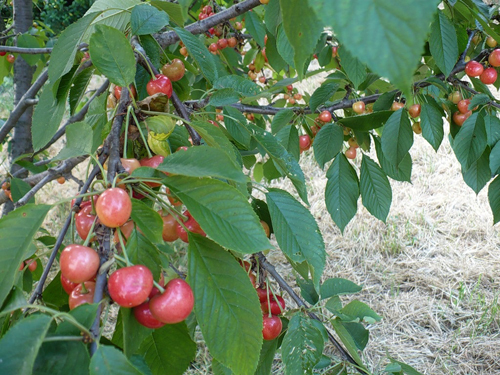
Pollinators
The Dyber variety is black - a self-fertile culture. In order for the cherry to show its best qualities during the fruiting period, you need to find a decent pollinator. The best varieties are Black Eagle, Zolotaya, Early Cassini, Bigarro Gaucher, Gedelfinger, Ramon Oliva, Zhabule, Francis.
Planting and leaving
Spring is often indicated as the recommended planting date. But if the tree is to grow in the southern regions, this process is best done in the fall - at the end of October, when most of the foliage will fall off. In any of these options, the planting hole is dug and filled in advance. It is advisable to choose a place that is sunny, with deep groundwater and loose fertile soils. In the first years of life, the seedling needs high-quality care, which includes regular watering, feeding, crown formation and prevention against diseases and pests. In adulthood, watering should be abundant, but not frequent. It is important not to miss the moisture during the pouring of the fruits, since during this period the laying of the future harvest is taking place. Every spring, thinning pruning of cherries is carried out, sanitary - as needed. Top dressing is done according to the usual scheme.
Dybera black is appreciated for its good productivity and excellent taste. Unfortunately, the variety cannot boast of strong immunity and excellent winter hardiness. Therefore, preventive treatments should be regular, for the winter the root zone should be mulched, and the stems of young trees should be wrapped in any non-woven material.

